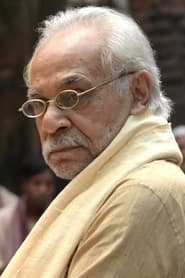
Ask Your Own Question
What is the plot?
As the film opens, G.H. Hardy recounts his most romantic incident in life, which was his collaboration with Srinivasa Ramanujan. This sets the stage for the story of Ramanujan, a brilliant mathematician from Madras, India, in the early 20th century. Ramanujan is introduced as a struggling young man working menial jobs in Madras, his exceptional mathematical skills noticed by his employers. They encourage him to share his work with the academic community, recognizing that his insights exceed simple accounting tasks.
Ramanujan's life is marked by poverty, but his mathematical genius is undeniable. He works as a shipping clerk, a job that allows him to marry and live in a modest house with his wife, Janaki, and his mother. Despite his humble circumstances, Ramanujan's talents spur him to write to Hardy, a renowned mathematician at Cambridge University. Initially skeptical, Hardy is eventually convinced by Ramanujan's mathematical content and, with encouragement from his colleague John Littlewood, invites Ramanujan to England.
As Ramanujan prepares to leave for Cambridge, he is filled with a mix of excitement and trepidation. He must leave Janaki behind, promising to keep up their correspondence. The separation is difficult for both, and Ramanujan's letters to Janaki become a lifeline, expressing his longing for home and his struggles in England.
Upon arrival at Cambridge, Ramanujan faces various challenges. He encounters racial prejudice and finds his adjustment to life in England more difficult than expected. Despite these obstacles, Hardy remains impressed by Ramanujan's abilities, though he is concerned about Ramanujan's lack of experience in writing proofs. Hardy's mentorship helps Ramanujan navigate these academic hurdles, and with perseverance, Ramanujan's work is eventually published in a major journal.
However, Ramanujan's health begins to decline. He is diagnosed with tuberculosis, a condition that worsens over time. His frequent letters to Janaki remain unanswered for many months, adding to his isolation. Despite these personal struggles, Ramanujan continues to delve into deeper mathematical research under Hardy's guidance.
One of the significant confrontations Ramanujan faces is with the academic rigor of Cambridge. His intuitive approach to mathematics clashes with the formal proof-based methods required by the university. This tension is exemplified in his interactions with a fictional character, Professor Howard, who represents the skepticism and hostility Ramanujan faced from some academics. In one memorable scene, Ramanujan jumps up in a lecture and adds results to the blackboard, showcasing his genius but also highlighting the cultural and academic barriers he faced.
As Ramanujan's health deteriorates, he becomes increasingly homesick. His longing for Janaki and his family back in India intensifies, and he begins to feel the weight of his isolation. Despite Hardy's efforts to support him, Ramanujan's condition worsens, and he eventually returns to India.
The climax of the film revolves around Ramanujan's health decline and his return home. Despite his achievements, he faces personal and professional challenges that ultimately lead to his early death at the age of 32. There are no direct confrontations in the climax, but Ramanujan's struggle with his health and his longing for home are poignant.
The film concludes with Ramanujan's legacy as a mathematical genius, celebrated by Hardy and others. It emphasizes the impact of his work and the tragic circumstances of his life. Hardy's narrative, which frames the story, underscores the profound effect Ramanujan had on his life and the world of mathematics. The final scenes are a testament to Ramanujan's enduring legacy, a man whose genius transcended cultural and academic barriers, leaving behind a body of work that continues to inspire mathematicians to this day.
In the end, there is no villain who causes Ramanujan's death; it is the tragic consequence of his health issues and the hardships he faced in England. The film ends on a note of reflection, highlighting the sacrifices Ramanujan made for his passion for mathematics and the lasting impact he had on the field. The story of Ramanujan serves as a powerful reminder of the challenges faced by geniuses who dare to challenge conventional wisdom and the enduring power of their contributions to human knowledge.
What is the ending?
In the ending of "The Man Who Knew Infinity," Srinivasa Ramanujan, after facing numerous challenges and struggles in England, ultimately succumbs to illness. His work is recognized posthumously, and he is celebrated for his contributions to mathematics. The film concludes with a poignant reflection on his legacy and the impact he had on those around him, particularly his mentor, G.H. Hardy.
As the film approaches its conclusion, we find Ramanujan in a state of declining health. He is in a hospital bed, visibly weakened by his battle with tuberculosis. The atmosphere is heavy with a sense of impending loss. Hardy, who has been a steadfast supporter and mentor to Ramanujan, visits him. Their relationship has evolved throughout the film, marked by mutual respect and a deep intellectual bond. Hardy expresses his admiration for Ramanujan's genius, acknowledging the profound impact his work has had on mathematics.
In a particularly emotional scene, Ramanujan reflects on his life and the sacrifices he made for his passion. He shares his thoughts on faith and the divine inspiration he believes guided his mathematical discoveries. Hardy listens intently, grappling with his own feelings of helplessness as he watches his friend suffer. The dialogue between them is filled with a mix of sorrow and reverence, highlighting the deep connection they forged through their shared love of mathematics.
As Ramanujan's condition worsens, he ultimately passes away, leaving Hardy devastated. The film captures Hardy's grief, showcasing his internal struggle as he comes to terms with the loss of his friend and collaborator. In the aftermath of Ramanujan's death, Hardy reflects on the legacy of his work. The film transitions to a montage that illustrates the lasting impact of Ramanujan's contributions to mathematics, emphasizing that his genius transcended his brief life.
The final scenes depict Hardy attending a lecture where Ramanujan's work is celebrated. The audience is shown discussing his theories and the significance of his findings, underscoring the idea that while Ramanujan may have left this world, his influence continues to inspire future generations of mathematicians. The film closes with a sense of bittersweet triumph, as Ramanujan's brilliance is recognized, and his story serves as a testament to the power of perseverance and the pursuit of knowledge against all odds.
In summary, the fates of the main characters are as follows: Srinivasa Ramanujan dies from tuberculosis, leaving behind a legacy of mathematical brilliance. G.H. Hardy, profoundly affected by Ramanujan's death, continues to honor his friend's memory and contributions to the field, ensuring that Ramanujan's work is remembered and celebrated. The film concludes with a poignant reminder of the enduring nature of genius and the impact one individual can have on the world.
Is there a post-credit scene?
The movie "The Man Who Knew Infinity," released in 2016, does not have a post-credit scene. The film concludes with a poignant ending that reflects on the life and legacy of the mathematician Srinivasa Ramanujan, played by Dev Patel. After the main narrative wraps up, the credits roll without any additional scenes or content following them. The focus remains on the emotional weight of Ramanujan's journey and his contributions to mathematics, leaving the audience with a sense of closure regarding his story.
What challenges does Srinivasa Ramanujan face when he arrives in England?
Upon arriving in England, Srinivasa Ramanujan faces significant challenges, including cultural isolation, racial prejudice, and the harsh climate. He struggles with the cold weather, which is a stark contrast to his native India. Additionally, he encounters skepticism from some of his peers at Cambridge, who doubt his unconventional methods and the validity of his mathematical theories. This isolation is compounded by his longing for home and the emotional toll of being away from his wife, Janaki.
How does G.H. Hardy initially react to Ramanujan's work?
G.H. Hardy initially reacts with skepticism to Ramanujan's work when he first receives his letter containing mathematical proofs. However, as he delves deeper into Ramanujan's theories, he becomes increasingly impressed by the originality and depth of Ramanujan's insights. Hardy recognizes Ramanujan's genius and becomes a mentor and advocate for him, despite the initial doubts he had about the validity of Ramanujan's unconventional approaches.
What is the significance of Ramanujan's relationship with his wife, Janaki?
Ramanujan's relationship with his wife, Janaki, is significant as it highlights his emotional struggles and the sacrifices he makes for his work. Their marriage is marked by a deep bond, but Ramanujan's decision to leave India for England creates a rift. Janaki's unwavering support and love serve as a source of strength for Ramanujan, yet the distance and his dedication to mathematics lead to feelings of loneliness and homesickness, emphasizing the personal cost of his pursuit of knowledge.
How does Ramanujan's health deteriorate during his time in England?
During his time in England, Ramanujan's health deteriorates significantly due to the cold climate, lack of proper nutrition, and the stress of his academic environment. He suffers from various ailments, including severe bouts of illness that are exacerbated by his isolation and the challenges he faces in adapting to a new culture. His declining health becomes a poignant aspect of the narrative, illustrating the physical toll that his genius and the pressures of academia take on him.
What role does the concept of faith play in Ramanujan's life and work?
Faith plays a crucial role in Ramanujan's life and work, as he often attributes his mathematical insights to divine inspiration. He believes that his abilities are a gift from God, which drives him to pursue mathematics with fervor. This faith is a source of comfort and motivation for him, especially during difficult times in England. It also influences his relationship with Hardy, who, while more secular in his beliefs, comes to respect Ramanujan's deep conviction and the spiritual dimension of his work.
Is this family friendly?
The Man Who Knew Infinity, while primarily a biographical drama about the life of mathematician Srinivasa Ramanujan, contains several elements that may be considered objectionable or upsetting for children or sensitive viewers. Here are some aspects to consider:
-
Cultural Discrimination: The film depicts instances of racism and cultural prejudice that Ramanujan faces when he arrives in England. These scenes may be uncomfortable for viewers, especially younger audiences.
-
Emotional Struggles: Ramanujan experiences significant emotional turmoil, including feelings of isolation and homesickness. His struggles with acceptance and recognition can be poignant and may resonate deeply with sensitive viewers.
-
Health Issues: There are references to illness and the impact of health on Ramanujan's life, which may be distressing for some viewers.
-
Death: The film touches on themes of mortality and loss, particularly towards the end, which could be upsetting for younger audiences or those sensitive to such topics.
-
Academic Pressure: The intense pressure and competition within the academic environment are depicted, showcasing the stress and anxiety that can accompany high expectations.
These elements contribute to the film's emotional depth but may not be suitable for all children or sensitive viewers.















































